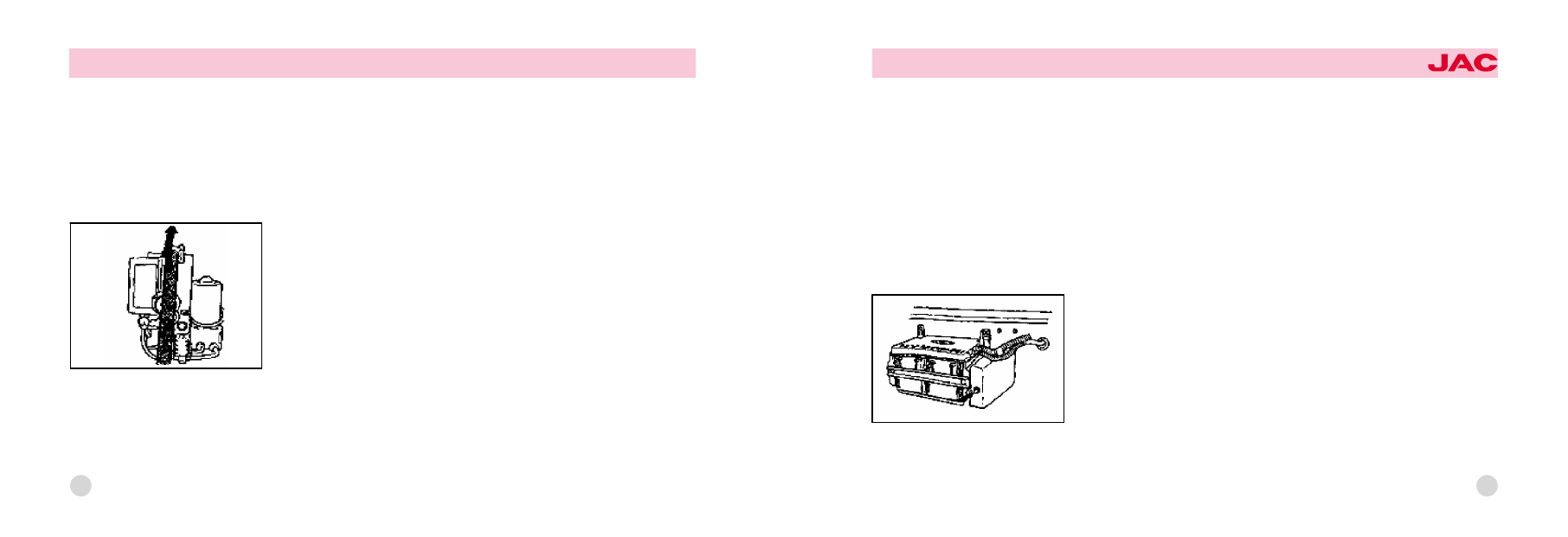Content .. 1254 1255 1256 1257 ..
Isuzu N-Series. Manual - part 1256

101
CAUTION:
To tilt the cab more than twice, wait a minimum of 20 minutes. Continuous op鄄
eration will be harmful to the electric pumping motor.
Operating the vehicle without installing the hook lever key can be dangerous.
Be sure to check that the hook lever key has been installed as a final step.
6. Enter the cab and check to ensure that the warning lamp is OFF.
NOTE:
If the lamp is ON, it means that the cab has not been locked.
Starting and stopping the engine with the cab tilted
荫
Turn the ignition key to the "ON" position.
荫
Shift the gearshift lever into neutral,
荫
Push the inspection starter switch into start the engine.
荫
Turn the ignition key to the "ACC" position to stop the engine.
CAUTION:
Since the engine is started with the cab tilted, make sure that the parking brake
is applied an d chocks applied to the wheels for the sake of safety.
100
NOTE:
Make sure the warning light turns off. If the warning light comes on, it means
that the cab has not been locked. In that case, follow the tilting cab operation
once again.
The knob has a function of a valve, turn the knob until it fixed.
If the electric tilting cab does not operate
It is possible to operate the tilting cab manually:
1. To raise the cab, turn the direction knob clockwise.
2. Insert the jack handle to the socket of the manual pump and operate the
jack handle up and down until the cab has been raised.The cab will not rise
immediately. It takes a while for the hydraulic pressure to build.
3. Continue operating the jack handle until it does not move.
4. To lower the cab, turn the direction knob counterclockwise.
5. Insert the jack handle to the socket of the manual pump and operate the
jack handle up and down until the cab is lowered.
OWNER爷S MANUAL
JAC HEAVY DUTY TRUCK